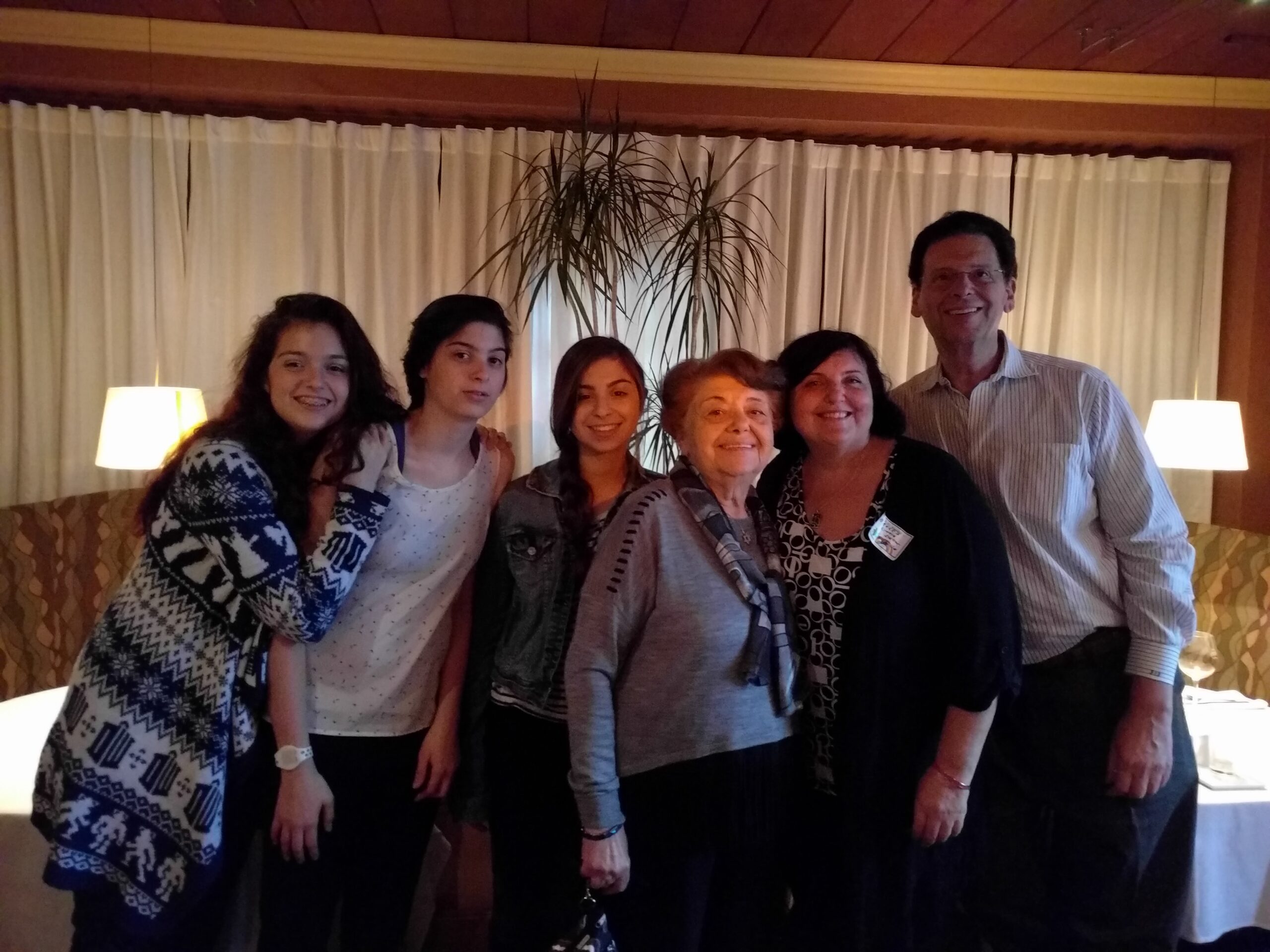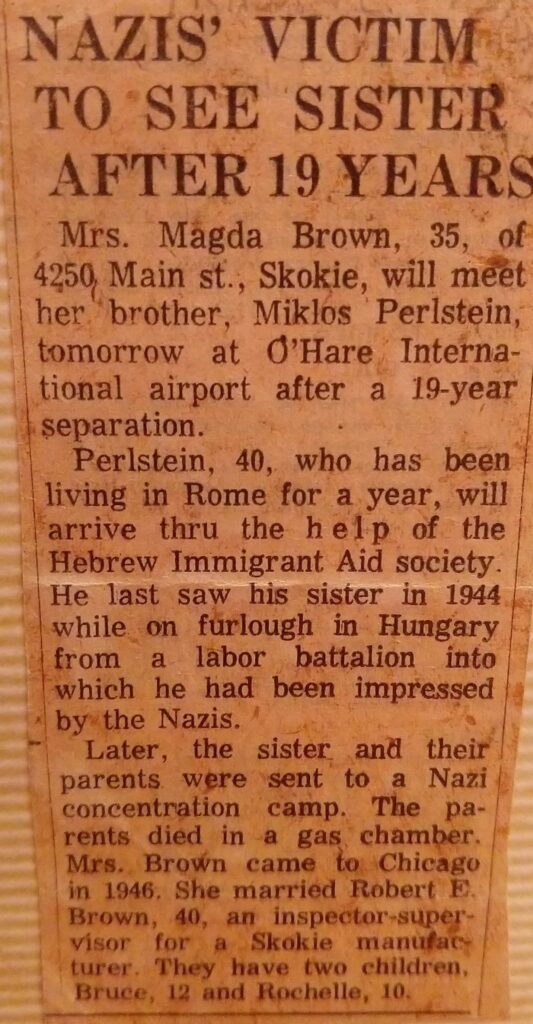Magda Brown was a Holocaust survivor on a mission to share her story with as many people as she can. We are devastated to share that Magda passed away July 7, 2020 at the age of 93.
Read on, watch this video series, explore a timeline to learn about Magda’s harrowing story of surviving Auschwitz-Birkenau and Buchenwald and starting a new life in the United States.
Magda was born June 11, 1927, in Miskolc, Hungary, to Regina and Jozsef Pelstein. She grew up in a safe, loving home and enjoyed a normal childhood. At the time, Hungarian Jewry as a whole lived in comparative personal and physical safety.
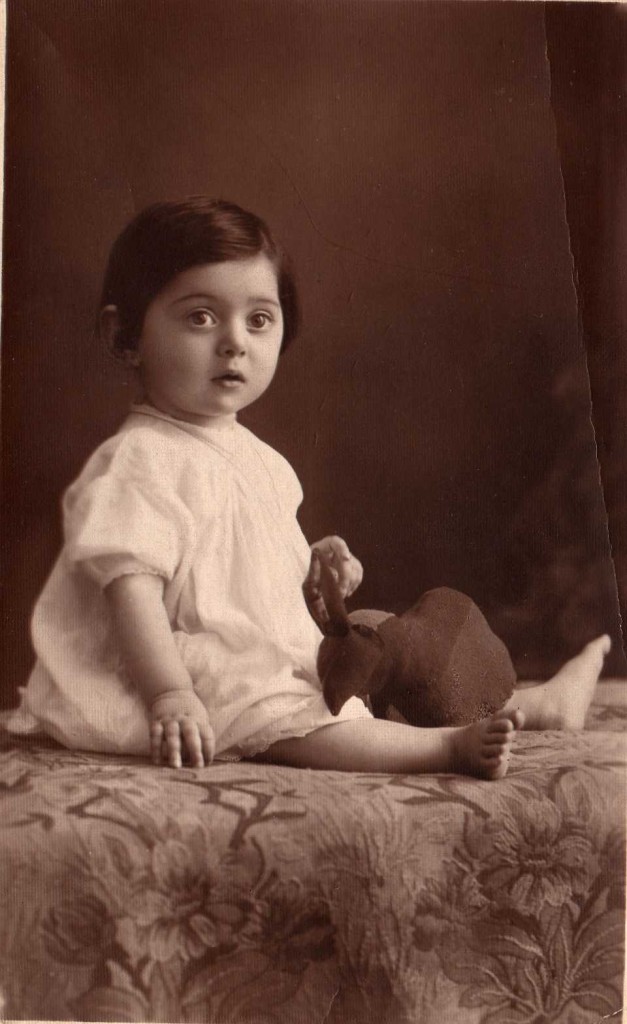
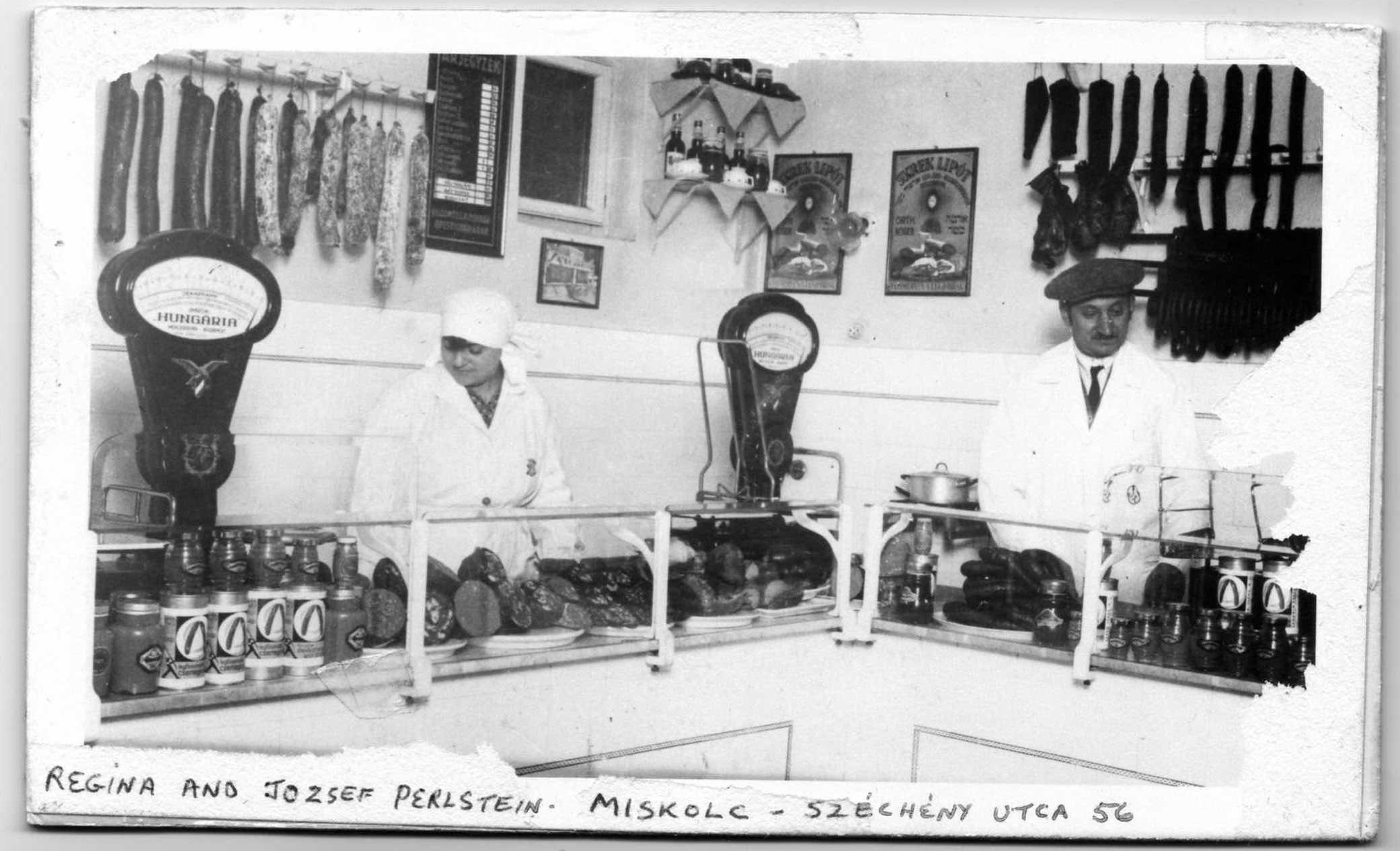
Although an ally of Germany, Hungary initially refused to deport Jews with Hungarian citizenship. However, in March 1944, German troops marched into Hungary with Adolf Eichmann, who was sent to establish special details for implementing the “Final Solution” of the Hungarian Jews.
A few weeks after the Nazi occupation, on March 19, 1944, all Jewish people were concentrated in a designated area, called the “ghetto.” The ghetto was later evacuated and Magda’s family was ordered to move into a transition camp in a Miskolc brick yard.
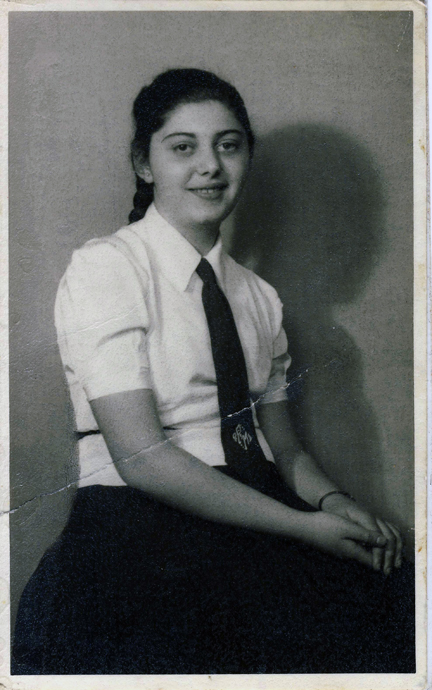
On June 11, 1944 — Magda’s 17th birthday — she and her family were crowded onto a railroad box car with 80 other people. Each transport held thousands of people, including children and the elderly. They traveled for three days without food, water, or any idea where they were being sent. The final destination was the Auschwitz-Birkenau concentration camp in Poland. After arriving, Magda was separated from her mother, father, aunts, uncles, cousins, and friends. It was the last time she saw them — they were sent directly into the gas chambers.
The deportation of Hungarian Jews to Auschwitz-Birkenau started on May 15, 1944 and lasted until July 7, 1944. Nearly 440,000 — half the Jews in Hungary — were deported. On average, 3 out of 4 people in each transport were gassed immediately upon arrival.
After months of torture and imprisonment in Auschwitz, Magda was “selected” to be sent to a work camp in August 1944. She was one of a thousand Jewish Hungarian women who were transported to Allendorf, Germany, a sub-camp of the Buchenwald concentration camp and the site of one of Germany’s largest munitions factories. The women were enslaved under dangerous conditions making bombs and rockets, filling them with liquid chemicals. The chemicals turned their skin yellow, their hair orange, and their lips purple.
In late March 1945, Magda and her group were sent on a death march to Buchenwald. Magda and several prisoners decided to attempt an escape, crawling on the ground and hiding in a nearby barn. For a day and a half, they hid in piles of straw, knowing that they would be shot if they were caught. Two soldiers from the 6th Armored Division of the U.S. Army then discovered Magda and the other women and liberated them. Magda was forever grateful to these brave, heroic soldiers.
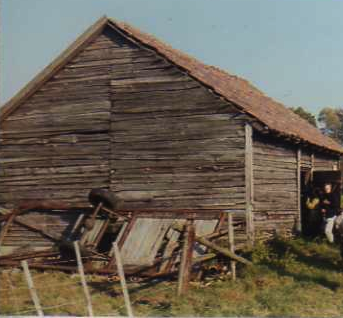
After liberation, Magda spent six months in a displaced persons camp, residing with a family in Germany. With the assistance of the U.S. government, she was able to return to Hungary and search for her family. Out of her extended family of 70, only six people had survived. Magda sought to locate her brother, Miklos, who served in the Hungarian military’s Jewish labor force, and was captured and imprisoned by the Russian army.
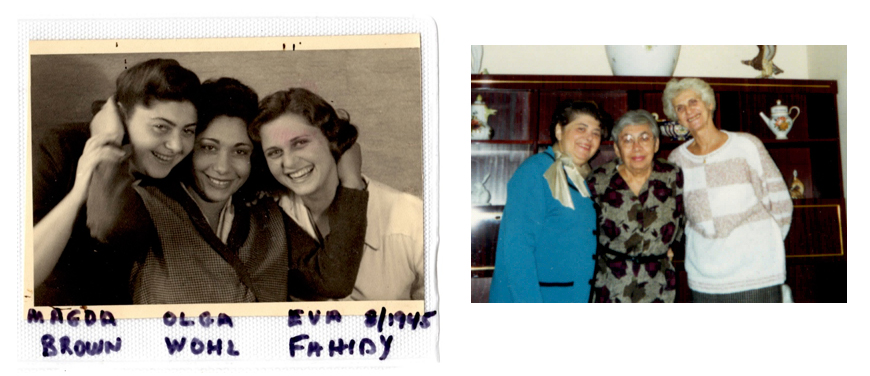
After the war, with the help of the Hebrew Immigrant Aid Society (HIAS), Magda made contact with her aunts and uncles in Chicago, who sponsored her immigration to the U.S. Her family members welcomed her to their home in September 1946. It took many years for Magda to overcome recurring nightmares of the Holocaust.
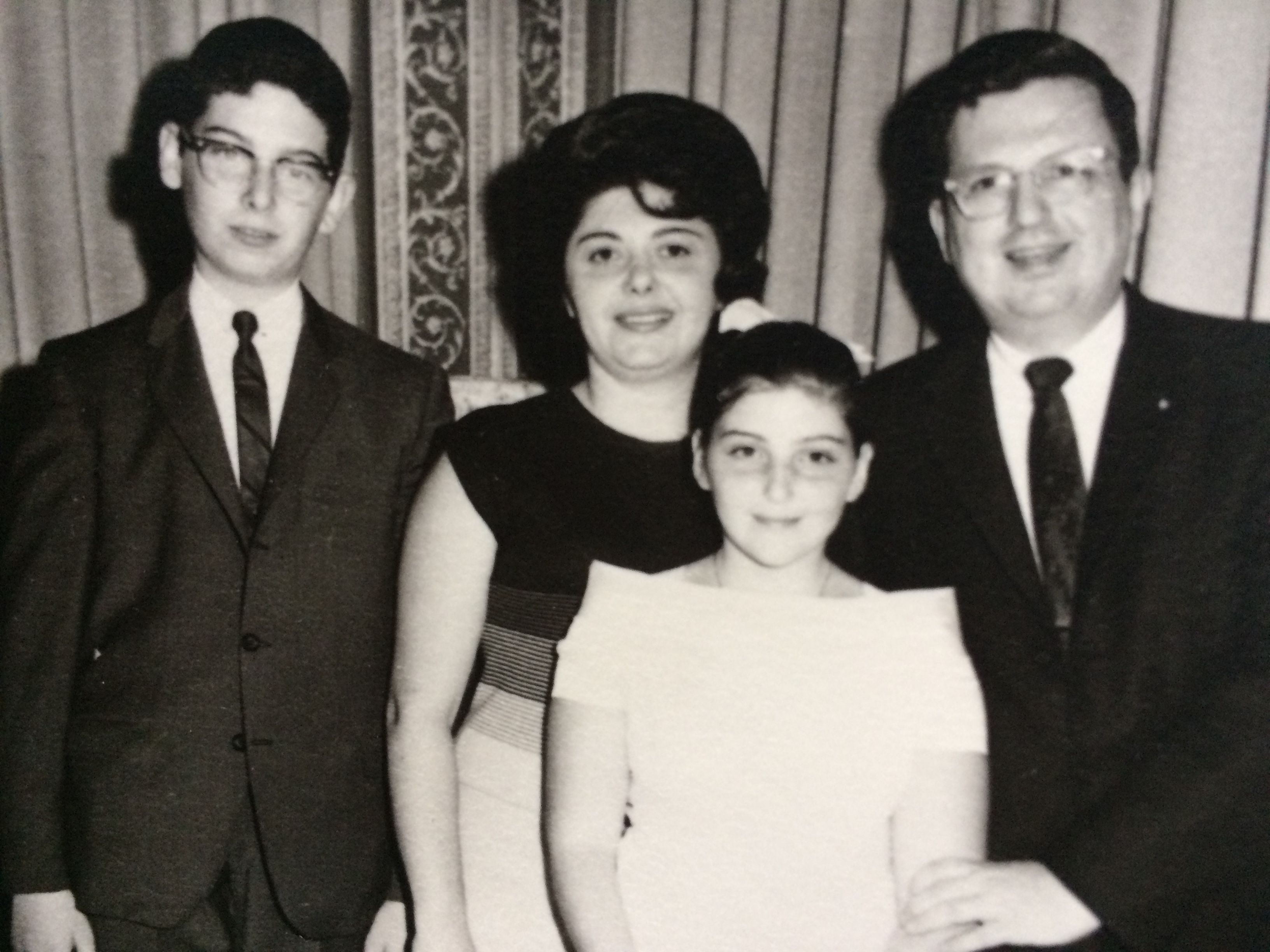
Eventually, Magda was able to build a new life in the U.S. With the help of the National Council of Jewish Women, Magda attended evening classes in American History and English. In 1949, she married Robert Brown, known to most as Bob or Grandpa Bobby, and together they raised their daughter and son in Skokie, Ill. Brown was finally reunited with her brother, Miklos, in 1962 — nearly two decades later.
For 40 years, Magda worked in a physician’s office as a certified medical assistant. Magda was an active member and past president of the American Association of Medical Assistants, Illinois Society.
In 1989, Magda and Bob narrowly survived a carbon monoxide leak at their home in Skokie. They shared their story on the television show Rescue 911, helping save lives by warning others of the signs of a carbon monoxide leak.
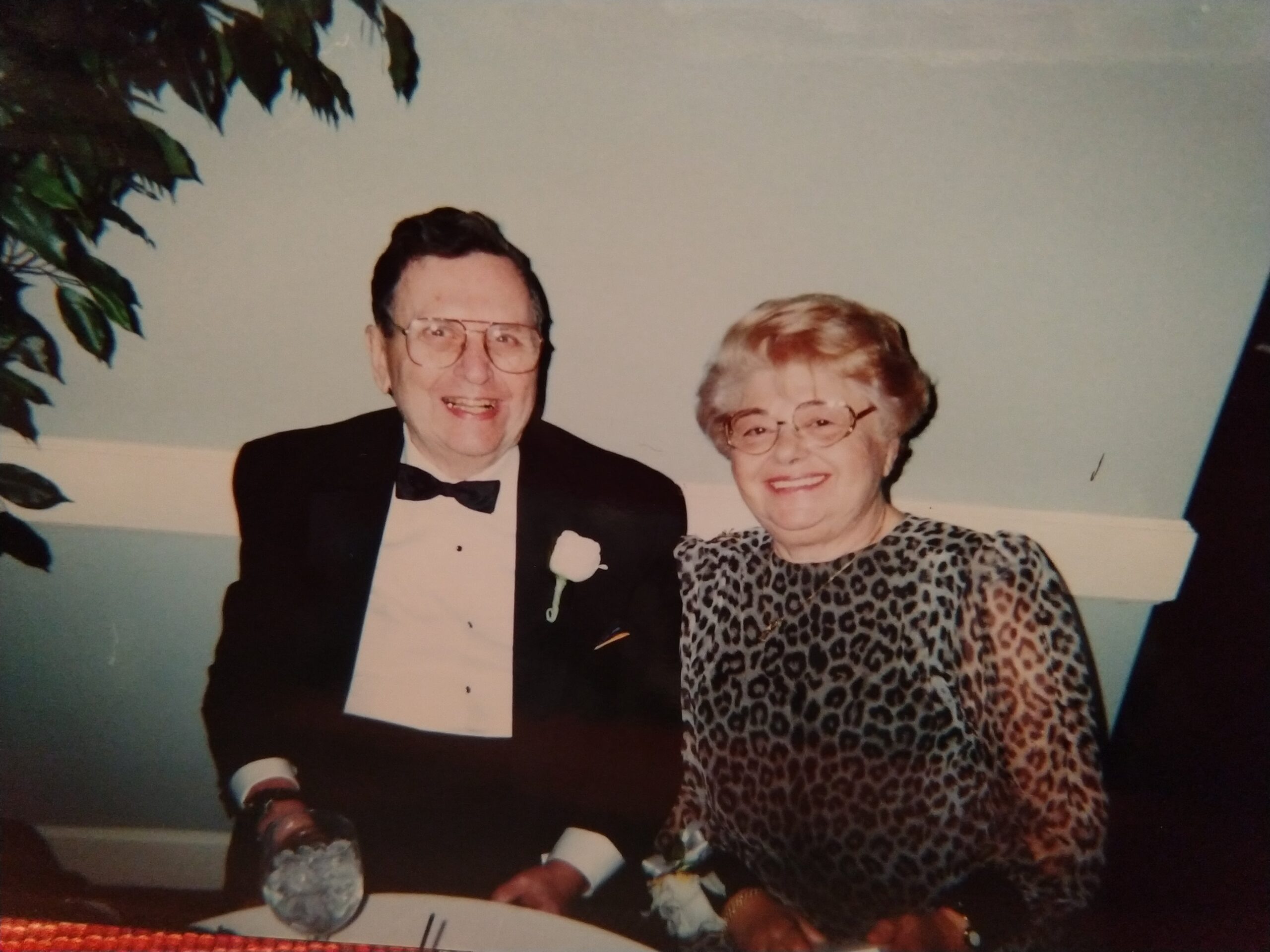
Magda and Bob were married for 52 wonderful years before he passed in 2001. Bob and his loving Chicago family took Magda into theirs, but he also helped his wife preserve her Hungarian heritage, learning Hungarian vocabulary and bringing home paprika from a spice shop to help food taste like home. Later in life, they often traveled to Hungary, Israel, and other destinations. A supportive and caring partner, Bob would have been so proud to see all that Magda accomplished later in life as a speaker.
Explore a timeline of Magda’s story
Return to the top of the page.
Although it was painful to remember her horrendous experiences, Magda believed her story and others have to be told. The telling and remembrance of survivors’ stories will reassure those who doubt the Holocaust that it was a very real and frightening period in the 20th century.
From one-on-one interviews with students to auditorium speeches, Magda was on a mission to tell her story to as many people as possible. Magda has spoken to more than 100,000 people at schools, universities, churches, synagogues and other events.
In October 2018, Magda was scheduled to speak at Chatham University in Pittsburgh, Pennsylvania. The tragic shooting at the Tree of Life synagogue took place the day before. Magda didn’t hesitate to board the plane to Pittsburgh, saying, “Now the world needs to hear the message even more. Let’s go.” Magda’s experience was covered by The Washington Post and a variety of other media outlets, reaching millions of people.
Magda was survived by her son and daughter, nine grandchildren, ten great-grandchildren, three great-great-grandchildren, her sister-in-law, nieces, nephews, and cousins, along with supportive and loving family and friends across the United States, Hungary, Germany, and around the world.
Magda made the world a better, kinder, and more thoughtful place and will be missed by so many. Her incredible lessons and legacy will live on in her family, friends, and in the millions of people she touched with her story.

